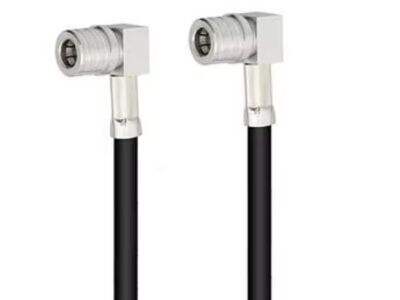Hvis du ønsker å overføre et signal, som for eksempel en TV-kanal eller en Wi-Fi-forbindelse, kreves det noe annet enn en vanlig kabel for denne oppgaven. En veldig vanlig type kabel brukt for disse formål kalles og ligner på coaxial kabel. Denne kategorien av kabler består av en sentral ledning som bærer signalet og er omgitt av isoleringslag som beskytter det fra skade. Disse lagene hjelper med å bevare styrken på signalet mens det reiser. Men det finnes også tilfeller der signalet kan svake når det reiser gjennom kabelen. Hvis du blir for langt unna kilden, som blir mer usikker når et signal reiser gjennom lufta eller nedover en kabel, kan datamaskinen din slutte å motta det; dette kalles "signal tap", og kan svake eller til og med blokkere signalet.
Hva RG58 er og hvorfor det er viktig
RG58 er en bestemt type kraftledning. Det er en type kabel som vanligvis har en kommunikasjonsrolle når det gjelder radioer og sikkerhetskameraer. Tap i RG58 er avgjørende da det sender signaler over avstander, og jo mer tap du har, avhenger det av flere forskjellige faktorer. Dette tapet kan variere grunnet flere faktorer, for eksempel, hvor langt signalet må reise for å nå den andre siden og hva slags signal du faktisk sender. Du kan bruke en spektrumanalyser for å se hvor mye signaltap som skjer i Rg58 kabel . Dette verktøyet tester kvaliteten på signalet på forskjellige steder langs kabelen, som forteller deg hvor mye signalet har tapt.
Signalkraft varier med avstand
En annen viktig faktor for signaltap kan tilskrives avstanden i RG58. Denne kabelen er et høyresistansmedium som hindrer signalkommunikasjon — jo lengre den er, jo svakere blir signalet når det reiser gjennom. For en bedre forklaring, la oss ta et eksempel: Hvis du bruker R g58c u til å overføre en TV-signal bare noen få føtter, for eksempel fra din antenne til stuen, er signalet fortsatt ganske sterkt. Etter alt, hvis du sender dette signalet hundrevis av mil fra en radiotårn til bilstereoet ditt, mister signalet en fantastisk mengde styrke. Hold dette i tankene når du lager systemer som må overføre signaler over betydelige avstander.
Beregning av signaltap
Hvis du vil finne ut hvor mye signaltap som skjer i RG58, finnes det en separat formel. Avhengig av hvor lang kabelen er, og hva slags signal du sender gjennom den, endrer denne formelen seg for å speile disse ulike egenskapene. Selv om denne formelen kan virke komplisert, kan du finne mange verktøy og online-kalkulatorer som gjør regnestykket for deg. Den eneste virkelige grunnen til å vite signaltapet, er for å finne ut om du taper nok av ditt signal slik at det er svakt når det ankommer der det trenger sin lysstyrke. Dette er lignende på å være sikker på at lyset fra lommelyset ditt er sterkt nok før du går inn i et mørkt rom.
Signaltap Over 100 Meter
På dette tidspunktet kan du kanskje spørre, hvor mye tap vil jeg se etter 100m av RG58-kabel? Vel, det avhenger. Hastigheten signalen reiser med og kvaliteten på kabelen som brukes. Vanligvis kan du miste 9 decibeler (dB) i signalstyrke per 100 meter av rg58u kabel på en frekvens av 100 MHz. La meg forklare det på en annen måte: når du har noe sterkt, som 10 watt fra A, og noen yards unna, på B-siden av den 100m lange kabelen, får du ikke mer enn om lag 1 watt. Men si at du bruker en bedre kabel – en RG213 eller lignende; dette ville redusert signaltapet langs samme avstand og frekvens.
 NO
NO
 EN
EN AR
AR
 BG
BG
 HR
HR
 CS
CS
 DA
DA
 NL
NL
 FI
FI
 FR
FR
 DE
DE
 EL
EL
 IT
IT
 JA
JA
 KO
KO
 PL
PL
 PT
PT
 RO
RO
 RU
RU
 ES
ES
 SV
SV
 TL
TL
 ID
ID
 LT
LT
 SR
SR
 SK
SK
 SL
SL
 UK
UK
 VI
VI
 HU
HU
 TH
TH
 TR
TR
 AF
AF
 GA
GA
 BE
BE
 LA
LA
 MN
MN
 SU
SU
 UZ
UZ
 XH
XH




